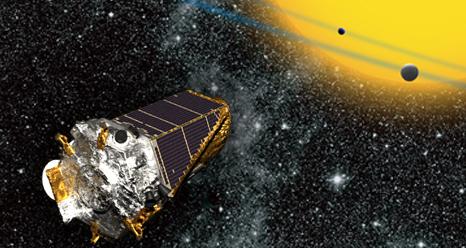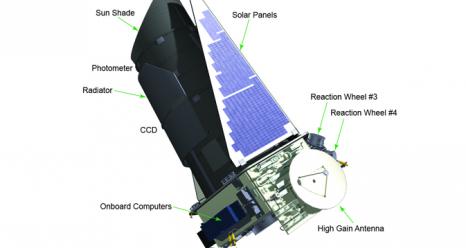NASA Will Try To Fix Kepler Space Telescope
This article is more than 2 years old
 Kepler, we just can’t quit you. During bouts of insomnia, cruising the NASA website for news and photos of your discoveries is kind of like dreaming. And if/when we need to move the human race (or whatever we become) elsewhere, we’ll be relying on you.
Kepler, we just can’t quit you. During bouts of insomnia, cruising the NASA website for news and photos of your discoveries is kind of like dreaming. And if/when we need to move the human race (or whatever we become) elsewhere, we’ll be relying on you.
So back in May it was devastating to hear of Kepler’s health problems, especially after NASA extended its mission to 2016. One of its reaction wheels, also known as a gyroscope, broke down. Why does a space telescope need wheels, you might ask? Because it has to be pointed very precisely in order to capture images, and the reaction wheels keep it aligned.
Kepler, which searches for habitable planets out there in the big ol’ universe, requires three of these wheels. Last July, a different wheel malfunctioned, so NASA used the spare then (they had four wheels in all). After imagining what it’s like to change a spare wheel on a space telescope, I don’t think I’ll complain again about changing a spare tire on my car. Now that Kepler’s lost another wheel, the telescope can’t point steadily enough to take usable images.

Here’s the good news: instead of letting Kepler go gently into the night, NASA will try to fix it in mid- to late-July. NASA’s engineering team is currently running some tests it developed for use in the recovery at Ball Aerospace Facility.
Currently, Kepler’s in “point rest” state. I guess you could say that’s akin to a cosmic coma. If they don’t fix it, they’ll continue analyzing the data the telescope harvested when it was operational, which could take a few more years. The wheel problem wouldn’t prevent its data from being relayed back to Earth.
So far, Kepler has spotted 134 habitable planets and another 3,277 candidate planets. Kepler finds planets with a photometer, which measures the brightness of stars — in fact, it can measure the luminosity of 100,000 stars at the same time, for years on end (well, provided the telescope stays healthy). Kepler is solar-powered, but never points at the Sun. As it monitors stars, Kepler notes any decreases in a star’s brightness, which could indicate the transit of a planet in front of it. Kepler transmits data back to Mission Control at NASA’s Ames Research Center in California, where the star’s brightness is graphed as a light curve. Dips in the curve that recur in a pattern likely indicate a new planet.
The recovery mission involves getting at least one of the two failed wheels operational again, though scientists acknowledge the possibility that it won’t work. If it doesn’t, Kepler will get a new job that doesn’t involve fixed pointing. On the upside, perhaps Kepler would become more socially popular if it stopped pointing?












